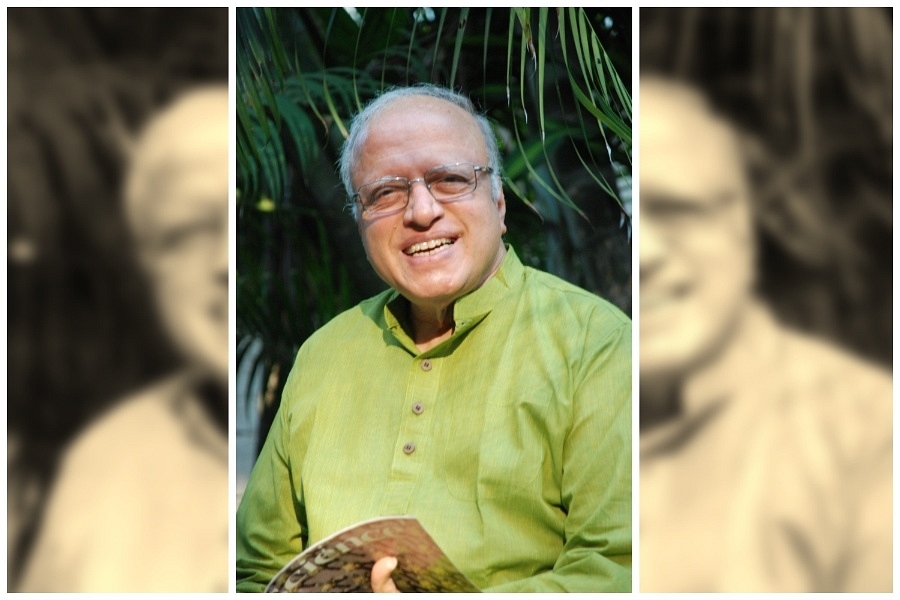Science
MS Swaminathan: Getting Independent India Independence From Hunger
- As a student, Swaminathan wished to make contributions to independent India.
- He contributed to making India independent of hunger.

MS Swaminathan (Facebook)
Dr. Monkombu Sambasivan Swaminathan, regarded as the father of the Green Revolution in India, breathed his last earlier this morning at his Chennai residence. He was 98.
Born in 1925 in Kumbakonam, Dr Swaminathan developed an interest in agricultural sciences even as a young student. Although he was a student of the medical sciences, the Bengal famine of 1943 and an urge to contribute to nation-building in independent India made him shift to the agricultural science.
After graduating from the Agricultural College in Coimbatore, Dr Swaminathan then went to obtain his PhD from Cambridge University, UK. He then embarked on a two-year postdoctoral tenure at Wisconsin, US.
During this period, he focused on the intricate science of potato genetics and the development of robust varieties resistant to frost and diseases.
By the time the 1960s came around, Swaminathan found himself working at as a geneticist at the Indian Agricultural Research Institute.
This was a period when India was facing a serious food shortage. The country's population was growing rapidly, but agricultural production was not keeping up, leading to widespread hunger and malnutrition.
Secondly, agriculture was the mainstay of the Indian economy, but most farmers were poor. One of the causes of this multi-faceted problem were low-yielding seeds, resulting in low productivity.
The solution to the problems lay in India increasing its food crop output and the farmers increasing their yields.
Dr Swaminathan's work on increasing agricultural yield had begun a decade before, in the 1950s, when he heard about the wheat variety Norin-10, from the Japanese geneticist, Hitoshi Kihara. Over the course of the next decade, he reached out to, and built upon the work of many other scientists, most notably Norman Borlaug, to develop new varieties of wheat and rice that were more resistant to pests and diseases, and that could produce higher yields.
The primary achievement of Swaminathan lay in developing semi-dwarf varieties of wheat and rice for India.
Up till then, the wheat and rice grown in India were of the tall and slender variety which could not bear the weight of enhanced grain output—the plants collapsed to the ground.
As a solution to this, Swaminathan sought to develop the semi-dwarf variety, that would not be as tall in height but could sustain the weight of increased grain output.
The story of how the Swaminathan obtained the seeds stretches across continents.
Seeds of Norin-10 semi-dwarf wheat variety had gone from Japan to the US, as a result of the US forces' presence in Japan in World War II. Here they had been crossed with locally grown wheats of the US.
Norman Borlaug then crossed the resultant wheat variety as well as the Norin-10 with Mexican wheat. The seeds of the resulting high-yielding variety were literally the seeds of the Green Revolution in India.
It was Swaminathan who initiated the process to get Borlaug to send the seeds to India and it was Swaminathan who oversaw the trial harvests as well as the sowing of the seeds in actual farmers' fields.
In Borlaug's own words: "a great deal of credit must go [to Swaminathan] for first recognizing the potential value of the Mexican wheat dwarfs. Had this not occurred…there would not have been a Green Revolution in Asia”.
Today, in 2023, when many state governments and Centre are distributing ration to crores of people every month, it is difficult to imagine an India where there was a shortage of foodgrains.
In fact, the biggest problems in Indian agriculture today is of storage and distribution of grains. The output issue has been resolved long ago, thanks to the efforts of M S Swaminathan.
Political independence would have mattered little if India was still dependent on others to satiate something as fundamental as the hunger of its citizens. As a student, Swaminathan wished to make contributions to independent India. He contributed to making India independent of hunger.
Support Swarajya's 50 Ground Reports Project & Sponsor A Story
Every general election Swarajya does a 50 ground reports project.
Aimed only at serious readers and those who appreciate the nuances of political undercurrents, the project provides a sense of India's electoral landscape. As you know, these reports are produced after considerable investment of travel, time and effort on the ground.
This time too we've kicked off the project in style and have covered over 30 constituencies already. If you're someone who appreciates such work and have enjoyed our coverage please consider sponsoring a ground report for just Rs 2999 to Rs 19,999 - it goes a long way in helping us produce more quality reportage.
You can also back this project by becoming a subscriber for as little as Rs 999 - so do click on this links and choose a plan that suits you and back us.
Click below to contribute.
Latest